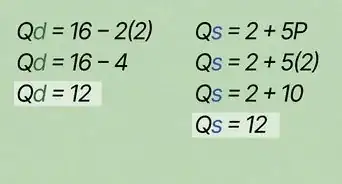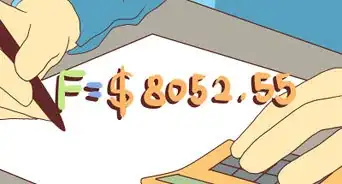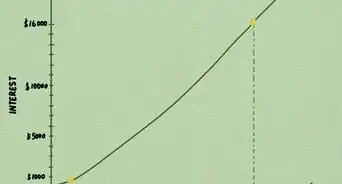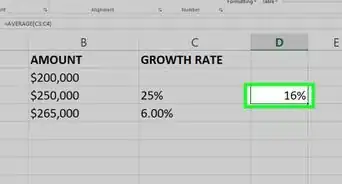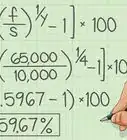X
wikiHow is a “wiki,” similar to Wikipedia, which means that many of our articles are co-written by multiple authors. To create this article, 16 people, some anonymous, worked to edit and improve it over time.
This article has been viewed 92,964 times.
Learn more...
School project? Or do you just want to increase your general knowledge? Whatever the reason, this article will help you to understand what makes a country rich or poor!
Steps
-
1Research the sources of a country's wealth, including its naturally-occurring resources, for example:
"Coffee can be produced only under certain climatic conditions. It is grown mainly in Brazil, partly in Central America, to a much lesser degree in Africa (Abyssinia, British Central Africa, German East Africa), and in Asia (Dutch India, British India, Arabia, Malacca). Cocoa can be produced only in tropical countries. Rubber, a product playing a very large part in modern production, also requires certain climatic conditions, and its production is limited to a few countries (Brazil, Ecuador, Peru, Bolivia, Guiana, etc.).
Cotton, a product occupying the first rank among all fibrous plants due to its importance in economic life is produced in the United States, India, Egypt, China, Asia Minor, and the Russian Central Asia territories. Jute, which takes the second place, is exported from one country only, namely, from India. If we take the production of minerals, we find the same picture, since we deal here to a certain extent with what is known as the natural resources of a country.
Coal, for instance, is exported from countries with large coal deposits (England, Germany, United States, Austria, etc.); kerosene is produced in countries having an abundance of oil (United States, the Caucasus, Holland, India, Romania, Galicia); iron ore is extracted in Spain, Sweden, France, Algeria, Newfoundland, Cuba, etc.; manganese ore is to be found mainly in the Caucasus and Southern Russia, India, and Brazil; copper deposits are in abundance mostly in Spain, Japan, British South Africa, German Southwest Africa, Australia, Canada, United States, Mexico, Chile, and Bolivia." - Imperialism and the World Economy, Nikolai Bukharin, 1917 -
2Evaluate the following questions on a country's economic system. These include being based on how it allocates its resources. Resource allocation and use is a problem and opportunity with which all societies are concerned, and it consists of:
- Which goods and services should be produced with society's resources?
- How should they be produced?
- Who should get them and for what purpose?
- Who decides such questions (and how)?
Advertisement -
3Verify the economic ideologies in your society. If an economy is inflexible or unresponsive due to whatever caused rigidity, it would leave no room for innovation or advancement. There are many ways for allocating resources, and they include ideologies comparable to those that follow:
- Traditional, tribal economy - resources are allocated according to the long-lived practices of the past in each area. These economies were the dominant method of resource allocation in human history and still remain strong in many tribal societies in parts of Africa, South America, Asia, and the Pacific. They are stable and predictable, as long as that particular set of economy, of traditions and market conditions, exists without complicating factors.
- Command economy- resources are allocated mostly by explicit instructions from some higher authority. These are also called centrally planned economies. The government usually controls all resource allocation in this type of economy.
- Market economy- resources are allocated according to individual private profit.
- Mixed economy- By far the most common economy. This is where some resources are centrally distributed and some resources are privately allocating according to profit.
- Participatory economy- where economic actors can participate in the economy. Defined by Michael Albert and Robin Hahnel.
- Economic democracy within a nation, state, village, tribe or community, etc. means people can participate in some meaningful way in deciding many of the fundamental questions and answers posed in this arena. There are various forms of votes from pure democracy to representative forms. Inputs by citizens or individuals would be regarding allocation and marketing of resources and products of each economy: many considerations include who sets the laws and regulations of assets, workforce, management, supervision, unions, environment, safety, zoning if any, marketing, pricing, how to use and pay out compensation from incomes derived.
-
4Take a look at economic growth. Economic growth is the increase in production of goods and services that occurs over long periods of time. When the annual output of goods and services has risen faster than the population, you have positive economic growth.
-
5Look at exports and debt. "In 1810, India was exporting more textiles to England than England was exporting to India. By 1830, the trade flow was reversed. The British had put up prohibitive tariff barriers to shut out Indian finished goods and were dumping their commodities in India, a practice backed by British gunboats and military force. Within a matter of years, the great textile centers of Dacca and Madras were turned into ghost towns. The Indians were sent back to the land to raise the cotton used in British textile factories. In effect, India was reduced to being a cow milked by British financiers.
By 1850, India's debt had grown to 53 million pounds. From 1850 to 1900, its per capita income dropped by almost two-thirds. The value of the raw materials and commodities the Indians were obliged to send to Britain during most of the nineteenth century amounted yearly to more than the total income of the sixty million Indian agricultural and industrial workers. The massive poverty we associate with India was not that country's original historical condition." - Michael Parenti, Against Empire -
6Monitor economic growth by keeping track of news about the real gross domestic product (real GDP). Real GDP is the total value of all final goods and services produced for the marketplace during a given period, within the nation's borders. Such that, when real GDP rises faster than the population, output per person rises, and so does the average standard of living. In other words, the higher the real GDP, the richer the country.
-
7The real GDP depends upon:
- The amount of output the average worker can produce in an hour;
- The number of hours the average worker spends at the job;
- The fraction of the population that is working;
- The size of the population.
-
8Consider a vital part of a nation's wealth as its inflation rate. Inflation is costly to society. If inflation rises too fast, people are no longer willing to hold on to money and will begin bartering with each other for goods and services, wasting valuable time and resources. In other words, high inflation rate slows economic development. This is why stable prices (a low inflation rate) are an important macroeconomic goal.
-
9Calculate the the price of net exports: the higher it is the wealthier the economy is. Net exports are a country's total exports minus its total imports. So when a country produces more than it purchases, it earns more money, and as a result, it becomes richer.
Advertisement
Community Q&A
-
QuestionHow does a fall in oil prices affect an economy?
 Community AnswerIf the country is an oil exporter, falls in prices negatively affect the country's wealth. If it is an oil importer, the country's wealth will be positively affected.
Community AnswerIf the country is an oil exporter, falls in prices negatively affect the country's wealth. If it is an oil importer, the country's wealth will be positively affected. -
QuestionWhat must a government do for a country to be classified as a developed country?
 DonaganTop AnswererIt must promote an economy which fosters a high employment level and a low poverty level.
DonaganTop AnswererIt must promote an economy which fosters a high employment level and a low poverty level. -
QuestionCan information make a country rich?
 SMIFS LimitedCommunity AnswerInformation combined with proper planning and execution can make a country rich. Just information alone cannot make a country or person rich.
SMIFS LimitedCommunity AnswerInformation combined with proper planning and execution can make a country rich. Just information alone cannot make a country or person rich.
Advertisement
References
About This Article
Advertisement









